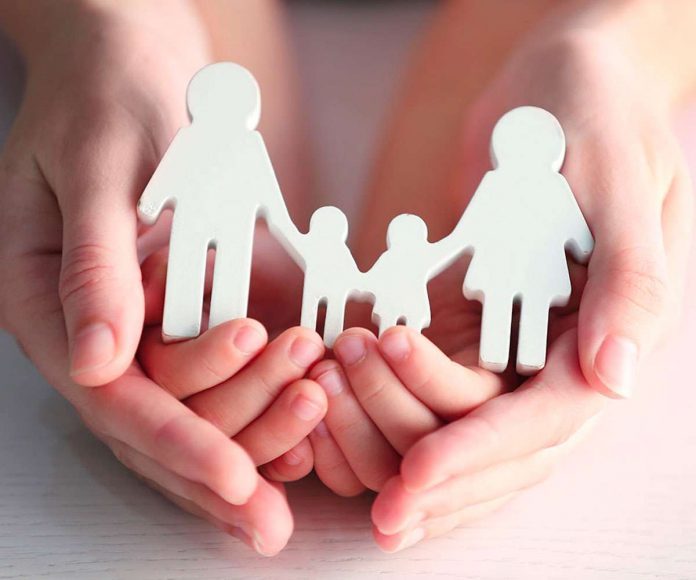This article is written by M.S.Bushra Tungekar from the University of Mumbai Law Academy. The author in this article discusses the procedure to adopt a relative’s child in India.
Table of Contents
Introduction
“Not flesh of my flesh, nor bone of my bone, but still miraculously my own. Never forget for a single minute, you didn’t grow under my heart but in it.”
-Fleur Conkling Heyliger
Adoption is the ray of hope for many. It adds love and meaning to the lives of many. The relationship and love between a child and the adoptive parent is so powerful and pure. It is a true example that you don’t have to be biologically related to be a family.
Adoption is beneficial for the homeless kid, no child deserves to go through the plight of being without a family. Adoption is a very personal matter. The reasons for the adoption of a child can be numerous from infertility to the need of wanting to provide a better future to a neglected kid.
Adoption laws in India
Adoption in India falls under the scope of personal laws. There is no uniform law governing adoption in India. The adoption laws are governed by various Acts and guidelines. They are based on personal laws.
- The Hindu Adoption and Maintenance Act of 1956: This Act governs the adoption of a child by a Hindu, Jain, Buddhists, and Sikh.
- The Guardian and Wards Act of 1890. : There are no formal provisions for adoption under the Muslim, Parsi, Christian, and Jewish personal laws. Therefore they can approach the courts under The Guardian and Wards Act of 1890. However, the guardians and wards Act allows a person to be a guardian of the child. The Act gives the parent only “guardianship” of a child. The child does not enjoy the same status as the biological child nor can the child have a right to inherit or take up the family name.
- The Juvenile Justice (Care and Protection) Act of 2015: the Hindu adoption and maintenance act facilitated the adoption of a Hindu child by a Hindu. The Guardians and wards Act creates a guardian and a ward relationship. The children belonging to the other communities or the orphans had no proper recourse. Therefore to bring a sense of uniformity a secular law was passed in the form of the Juvenile Justice (Care and Protection) Act.
- Central Adoption Resource Authority (CARA) Guidelines and Adoption Regulations, 2017: CARA enables the simple and easy functioning of the adoption procedures. It also lays down guidelines, regulations, and processes for the adoption procedure.
Who can adopt in India?
General
Any male or female who is of a sound mind and is not a minor. The emotional and financial and physical stability of the prospective adoptive parents is also considered.The minimum age gap between the adopted child and either parent should be not less than 25 years.
Single parent
Any person can adopt irrespective of their marital status. However, a single male parent is not permitted to adopt a girl child. The maximum age limit for a single parent is fifty-five years. A single parent can adopt a child irrespective of whether they have a biological daughter or son. The single parent must not have more than 4 kids unless he/ she is adopting a child of a relative, a child with special needs, or a stepchild.
Age eligibility
- To adopt a child who is not more than 4 years old the maximum age is 45 years.
- To adopt a child who is not more than 8 years old the maximum age is 50 years
- To adopt a child who is not less than 8 years up to 18 years old the maximum age is 55
Couple
A married couple can adopt with the consent of both the parents. The composite age of the married couple shall be calculated at the time of registration according to the age criteria of CARA. Composite age here means the age of parent A plus the age of parent B. It is also required by CARA that the couple has had a stable marital relationship of 2 years. However, this particular age difference criteria do not apply to cases of adoption by relative and by step-parent.
Age eligibility
- To adopt a child who is not more than 4 years old the maximum composite age is 90 years.
- To adopt a child who is not more than 8 years old the maximum composite age is 100 years
- To adopt a child who is not less than 8 years up to 18 years old the maximum composite age is 110 years.
Which child is eligible for adoption?
According to section 56 along with section 38 of the Juvenile Justice (Care and Protection) Act 2015, and regulation 4 of Adoption Regulations 2017 any child is eligible for adoption who
- The child welfare committee who after making the efforts of tracing a child’s parents declare the child legally free for adoption. The child can be an orphan or an abandoned or a surrendered child.
- A child may be adopted by a relative.
- An off-spring from a previous marriage can also be adopted provided the child has been surrendered for adoption by the biological parent.
Which relative can adopt?
According to section 2 subsection 52 of the Juvenile Justice Act 2015, a relative for the purpose of adoption shall mean paternal or maternal aunt or paternal or maternal uncle or paternal or maternal grandparent (s).
What is the Central Adoption Resource Authority (CARA)?
CARA is a statutory body which has been established by the Ministry of Women & Child Development in India. It regulates and monitors the adoption of children in India. It lays down regulations and guidelines. The body also looks after inter-country adoptions.
In 2003 India ratified the Hague Convention of 1998 on intercountry adoptions therefore Intercountry adoptions take place in accordance with the provisions of the convention.
In-country relative adoption
Children can be adopted by their relatives as well. The adoption can be done in-country as well as intercountry.
Procedure
Step 1
Prospective adoptive parents are required to register themselves on Child Adoption Resource Information and Guidance System (CARINGS). They are further required to submit the necessary documents to the District Child Protection Unit, who will then upload the documents on CARINGS.
Step 2
Consent from the Biological parent(s) or permission from the child welfare committee is required. Permission of the child welfare committee to the consent given by the guardian of the child in cases where the biological parents are dead or unable to give their consent. The consent should be recorded in the way provided in Schedule XIX or Schedule XXII.
Step 3
Consent of the child.
The Adoption regulation 51 sub-section 3 requires the consent of the child in cases where the child is 5 years old or above the age of 5 years.
Step 4
Prospective Adoptive Parents shall file an application under section 56(2) of the Juvenile Justice Care and Protection Act 2015 in the competent court (Family Court or District Court or City Civil Court). The application is to be filed along with the consent form (Schedule XIX or Schedule XXII)
Affidavit by the prospective adoptive parents in support of their financial and social status. The affidavit should be in the form prescribed under Schedule XXIV.
Along with the documents mentioned in Schedule VI.
Step 5
The court before approving the adoption shall ensure that the conditions laid down under section 61 of the Juvenile Justice Care and Protection Act 2015 and regulations 51 to 56 of the adoption regulations.
Section 61 of the Juvenile Justice Care and Protection Act 2015 states that
- The court must ensure that the adoption is for the well being of the child
- The court must give due consideration to the consent of the child with regards to the mental understanding and the age of the child.
- The court must also ensure that neither the prospective adoptive parent nor guardian of the child has agreed to make or has given any amount or payment or compensation in consideration of the adoption. However, the permitted charges and fees or child care corpus under the adoption regulations authorized by the authority are to be excluded.
- Further, the adoption proceedings are to be held in camera by the court and are to be disposed of within two months.
Step 6
Obtaining a certified copy.
The court shall provide to the prospective adoptive parents a certified copy of the adoption order.
The prospective adoptive parents are supposed to furnish this certified copy to the District Child Protection Unit, who will then submit this copy online to the authority.
Documents required
- Prospective adoptive parent’s Proof of residence
- Consent for the adoption of the older child of the prospective adoptive parents.
- Consent of the biological parents (as per schedule Schedule XIX of the Adoption Regulations 2017)
- Only if applicable, Permission from the Child Welfare Committee to the legal guardian to surrender the child in adoption with the relative as provided in Schedule XXII.
- Affidavit by prospective adoptive parents in support of their relationship, financial and social status as provided in Schedule XXIV of the Adoption Regulations.
- Adoption order from the court.
Intercountry relative adoption
Procedure
Step 1
A non-resident Indian (NRI) or an Overseas Citizen of India, who intends to adopt a relative’s child should approach an Authorised Foreign Adoption Agency or the Central Authority in the country of residence. It must be in the country of residence for the purpose of preparation of their Home Study Report and online registration in CARING.
In absence of an Authorised Foreign Adoption Agency or the Central Authority in the country of residence, the prospective adoptive parents are required to approach the concerned government department or in case of Indian citizens, the Indian diplomatic mission in that country.
Step 2
On completion of the Home study report, the concerned authority (Authorised Foreign Adoption Agency or the Central Authority or the Indian diplomatic mission) shall then register the application of the prospective adoptive parents in CARING along with the necessary documents. (as mentioned under schedule VI).
Step 3
On receiving an adoption application by a prospective adoptive parent willing to adopt their relative’s child, the CARING must forward the application to the District Child Protection Unit. The application is forwarded for obtaining a family background report of the child as provided in Schedule XXI. The family background report is conducted by a social worker and an authorized fee may also be charged.
Step 4
Articles 15 and 16 of the Hague Adoption Convention requires the Authority to forward the family background report to the receiving country along with an approval letter for the adoption.
Step 5
On receiving the required documents The Authorised Foreign Adoption Agency or Central Authority forwards a certificate under Article 5 or Article 17 of the Hague Adoption Convention to the Authority.
In the case of countries that are not signatories to the Hague Adoption Convention, the family background report of the relative’s child and authority’s approval letter is forwarded to the Indian diplomatic Mission. Indian diplomatic Mission then gives a recommendation letter.
Step 6
Prospective adoptive parents file an application under section 60 (1) of the juvenile justice care and protection act 2015 in the competent court. The application is to be filed along with the consent form ( Schedule XIX or Schedule XXII).
Affidavit by the prospective adoptive parents in support of their financial and social status. The affidavit should be in the form prescribed under Schedule XXIV.
Along with the documents mentioned in Schedule VI. Furthermore, the adoption application is to be filed in the district court where the child resides as provided in Schedule XXXI.
Step 7
The court before approving the adoption shall ensure that the conditions laid down under section 61 of the Juvenile justice care and protection act 2015 and regulations 51 to 56 of the adoption regulations. (discussed above)
Step 8
Obtaining a certified copy.
The court shall provide to the prospective adoptive parents a certified copy of the adoption order. The prospective adoptive parents are supposed to furnish this certified copy to the District Child Protection Unit, who will then submit this copy online to the authority.
Step 9
The authority is required to issue a no-objection certificate in favor of the adoption of the child within ten days of receiving the adoption order. The no-objection certificate is forwarded by the District Child Protection Unit along with a copy to the concerned Authority.
Step 10
Under Article 23 of the Hague Adoption Convention, the authority issues a Conformity Certificate within three working days and in the format provided in Schedule X.
What are the documents required for intercountry relative adoption?
For intercountry relative adoptions, the documents required for intercountry adoption are to be uploaded to Child Adoption Resource Information and Guidance System at the time of registration along with those documents further given below is the list of required documents
- Consent of the older child in the biological family (above the age of 5 years).
- Consent of the older child to be adopted.
- in case of Hague ratified country permission of the receiving country in accordance with Article 5 or 17 of the Hague Adoption Convention is necessary
- Relationship of the prospective adoptive parents to the relative child (family tree).
- Recent family photographs of the child, adoptive parents, and biological parents.
- Consent of the biological family as provided in Schedule XIX.
- If applicable Permission from the Child Welfare Committee to the legal guardian to surrender the child in adoption with the relative as provided in Schedule XXII.
- Family background report by District Child Protection Unit as provided in Schedule XXI.
LawSikho has created a telegram group for exchanging legal knowledge, referrals and various opportunities. You can click on this link and join:
 Serato DJ Crack 2025Serato DJ PRO Crack
Serato DJ Crack 2025Serato DJ PRO Crack











 Allow notifications
Allow notifications



